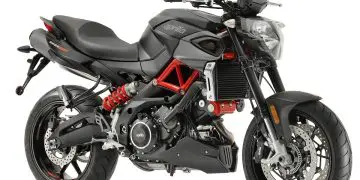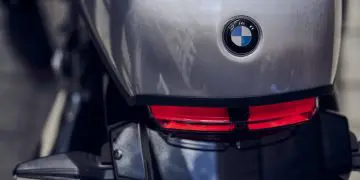For the international presentation of the new Triumph Tiger 900 to the press, we once again went to Málaga. This is a range that is divided between the GT, GT Pro, and Rally Pro versions, and in this presentation, we had the opportunity to ride the most equipped versions, which are usually the choice of the public. So we rode with the more road-oriented GT Pro on asphalt and with the more versatile Rally Pro on all terrains and also on tarmac. The improvements were not huge but they are felt and very positively!
More affordable to buy and easier to ride than the big Tiger 1200, the 900cc version has been highly coveted over the past few years, and has even received several international awards. In competition, with the brand ambassador Iván Cervantes at its controls, it has also won several rallies and enduro races, in the class dedicated to larger bikes naturally.
THE IMPROVEMENTS
The major revolution of this model occurred in 2020, when it started to incorporate a T-plane engine, with much more character and traction. Now for 2024, the Tiger 900 did not undergo a total overhaul, but rather refinements that turned out very well. Starting with the engine, which is now more powerful, with an additional 13 horsepower (for a total now of 108 hp) that mainly come at high revs but without the three-cylinder losing torque at low and medium revs. In fact, the maximum torque value has also increased, but in this case, it was only 3 Nm more for a maximum value of 90 Nm.
In this generation we find new pistons that helped achieve a higher compression ratio and better combustion; several improvements in the cylinder heads, new camshafts, and larger intake ducts. Despite the performance improvements, Triumph reveals that this engine is 9% more fuel efficient, capable of reaching 425 km of autonomy, which is excellent in these bikes with a 20-liter tank. To aid in performance, we also find a new and complete exhaust system, lighter and allowing better “breathing” without losing the sound and character.
Still, for those who are not satisfied, Akrapovic has developed a muffler for these Tigers – in titanium and carbon – 1.9 kg lighter. We just don’t know if the sound changes much or not!
Also in terms of news, maintaining the good braking equipment (Brembo Stylema calipers and cornering function), Triumph has now made slight changes, with a new ABS module from Continental and emergency lights during stronger braking.
In terms of riding position we have a new seat with different foam, which is also more spacious, and the handlebar now has a cushioned mount for greater comfort. Only in the case of the Rally Pro, the handlebar is closer to the rider by 15 mm, for greater ease of use. In terms of suspensions, there were no changes, because these models were already very well equipped in that aspect. The side panels are new in this generation, there is a USB-C input, and in terms of instrumentation the 7-inch TFT is new and similar to the Tiger 1200, with Bluetooth connectivity, being very attractive and complete.
In other words, the British brand did not intend to launch completely new models but rather make good improvements, a general refinement that pleased us a lot, but we will get to the driving impressions.
COMPLETE
It is important to remember that in this range the GT Pro and Rally Pro already have a huge standard equipment, including heated grips and seats, cruise control, bi-directional quickshifter, auxiliary lights, adjustable windshield, center stand, tire pressure monitoring, height-adjustable seat, among many luxuries. And of course, the riding modes to use and abuse: five in the GT PRO with Rain, Road, Sport, Off-Road, and Rider modes, to which Off-Road Pro is added in the Rally Pro version. As for the most obvious differences, the GT Pro has aluminum wheels, with a 19” front wheel, while the Rally Pro has spoked wheels, with a 21” front wheel.
The suspension travel is also different, with the more road-oriented Marzocchi model providing 180 mm of travel at the front and 170 mm at the rear, while the Rally Pro’s Showa suspension offers 240 mm at the front and 230 mm at the rear. Suspensions that are adjustable in either case, although the GT Pro is the only one that has an electronic unit for adjusting the preload of the rear shock absorber. Note also the various types of luggage systems available, with the Trekker and Expedition cases offering different functionalities, as well as other accessory packages available, the Performance and Protection packs, each with numerous components. ON THE GROUND It is already known that the Rally Pro has a very high standard equipment, but off-road we had a bike with slight modifications, such as the fitting of Michelin Anakee Wild tires much more suited to off-road terrain, absence of footrests for the passenger and wider footrests without rubber, ideal for use with enduro / motocross boots. Otherwise, everything we had mounted was standard.Triumph Tiger 900 Rally Pro
A Rally Pro possui de série diversas proteções que poderão minimizar os estragos em todo o terreno.
Os assentos estão espaçosos, e apesar de não serem extremamente macios não sentimos cansaço. O sistema de escape é novo e a sonoridade é muito agradável.
Esthetically the Rally Pro is very attractive with its spoked wheels. The suspensions offer a huge travel and withstand well the rough treatment off-road or on poorly paved asphalt.
For off-road riding it is recommended not only to remove the rubber from the footrests but also to mount other larger elements of these.
The brand image is still there, but now with very well designed panels and appealing colors for 2024.
The front windshield can be manually adjusted while driving, but in any case the aerodynamic protection is high.
A motorcycle that we liked practically everything about, but we greatly appreciated the ease of driving, it is not a big deal for example to miss a gear change, which doesn’t usually happen because the bidirectional quickshifter is excellent! We used the lower seat, at 860 mm from the ground, which made maneuvering easier for us, and the driving position is very good, both sitting and standing. We almost always opted for the off-road driving mode, as in off-road Pro mode the system disables all aids in terms of ABS and traction control, which may not be the most suitable for such a powerful and heavy motorcycle. And since the suspensions are really good and the driving is easy and not “stressful”, we ended the day without much fatigue, even after many hours on the Tiger, sometimes with some dust affecting visibility.
What we liked least, very little: the throttle response could be slightly improved, sometimes being slightly abrupt at low speeds, and the instrumentation software is sometimes a bit slow when starting the motorcycle. Everything else is impeccable and with excellent sensations from the engine, full of character and that seemed noticeably stronger at higher revs, but we still needed to take it to the asphalt.
ON THE ROAD
For the asphalt we were also curious, not only to understand the improvements in both versions, but also to try to reach a conclusion. GT Pro with a 19-inch front wheel (and Metzeler Tourance Next tires) or Rally Pro with a 21-inch wheel (Bridgestone Battlax Adventure tires), which would be our favorite?
That is, off-road we only rode with the Rally Pro, but on asphalt we rode with both, GT Pro and Rally Pro, with which we did over 200 km, sometimes in very cold weather (thank you Triumph for the heated grips and seat). On the road, we cleared up doubts about how the engine is actually even better, more lively at high revs, with a lot of character, with few vibrations, a delight to use. We also realized how fuel-efficient it is, with very low consumption around 5 liters per 100 km, even with an interesting pace.
As for the initial doubts, we liked both models on the road, but I confess that the Rally Pro was my favorite. It is true that on roads with many curves we have a bit more “work” due to the 21” wheel that loses agility, and under hard braking the suspensions also sink more.
Triumph Tiger 900 GT Pro
The revised three-cylinder engine is a marvel, with more power and character at high revs, as well as being quite economical and with few vibrations.
The GT Pro is the only version with electronic suspension adjustment, in this case for the preload of the monoshock.
The braking is powerful and easy to modulate, both on asphalt and off-road. The suspensions of the GT Pro are firmer but also drier on rough roads.
The Tiger 900 has new side panels that improve aerodynamics and give it a new visual aspect.
The instrumentation is now more pleasant and easy to read. The 7” TFT is actually super complete and has connectivity.
But since roads are usually not perfect and the Showa suspensions with a lot of travel can absorb all kinds of bad road surface (the Marzocchi on the GT Pro have a drier operation) – combined with a more imposing driving position – I had more fun with the Rally Pro. For city and asphalt with always good road surface, the GT Pro may have an advantage, although it is always a matter of personal taste.
It must also be said, a less experienced driver may feel better in control of the more road-oriented version, which is less intimidating. As for the rest, besides effectiveness, these bikes gave us a lot of driving pleasure, and that was what surprised us the most in this presentation. A desire to explore the high revs of this engine that did not happen before. With appealing colors for 2024 and a lot of quality, which one is your favorite?
TRIUMPH Tiger 900 GT Pro / Rally Pro
ENGINE three-cylinder inline, 12 valves, liquid cooling
DISPLACEMENT 888 cc
POWER 108 hp (79.5 kw) @9,500 rpm
TORQUE 90 Nm at 6,850 rpm
GEARBOX 6 speeds
FRAME steel tubular
FUEL TANK 20 liters
FRONT SUSPENSION GT Pro: 45 mm Marzocchi inverted fork, 180 mm travel / Rally Pro: 45 mm Showa inverted fork, 240 mm travel
REAR SUSPENSION GT Pro: Marzocchi monoshock, 170 mm travel / Rally Pro: Showa monoshock, 230 mm travel
FRONT BRAKE 2 discs 320 mm, Brembo Stylema Monobloc 4-piston calipers
REAR BRAKE 255 mm disc, 1-piston caliper
FRONT TIRE GT Pro: 100/90-19 / Rally Pro: 90/90-21
REAR TIRE 150/70R17
WHEELBASE GT Pro: 1,556 mm / Rally Pro: 1,151 mm
SEAT HEIGHT GT Pro 820 – 840 mm / Rally Pro 860 – 880 mm
WEIGHT GT Pro 222 kg / Rally Pro 228 kg
R.R.P. (from) Tiger 900 GT: €14,195 / Tiger 900 GT Pro €16,295 / Tiger 900 Rally Pro €17,295








